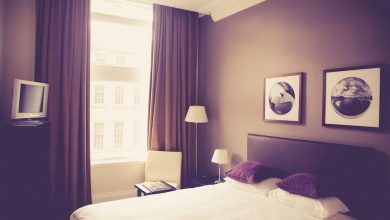How to Create an Allergy-free Home?

Having a home that is free from allergens is essential for the health and well-being of you and your family. Allergens can trigger allergic reactions, causing discomfort and even serious health issues. Creating an allergy-free home is not as difficult as it may seem, and with a few simple steps, you can significantly reduce allergens in your living space. In this article, we will explore some effective strategies to help you create an allergy-free home.
Identify and Eliminate Common Allergens
The first step in creating an allergy-free home is to identify and eliminate common allergens. Dust mites, pet dander, pollen, mold, and certain chemicals are some of the most common culprits. Start by thoroughly cleaning your home, paying special attention to areas where allergens tend to accumulate, such as carpets, upholstery, and bedding. Regularly vacuum and dust your home to remove any trapped allergens.
Invest in Hypoallergenic Bedding
Your bed can be a breeding ground for allergens, so it’s crucial to invest in hypoallergenic bedding. Opt for allergen-proof mattress and pillow covers to prevent dust mites and other allergens from penetrating the fabric. Wash your bedding regularly in hot water to kill any dust mites or bacteria that may be present. Additionally, consider using hypoallergenic pillows and comforters to further reduce the risk of allergens in your sleeping environment.
Maintain Optimal Indoor Humidity Levels
Maintaining optimal indoor humidity levels is vital for reducing allergens like mold and dust mites. Use a dehumidifier in areas prone to moisture, such as basements and bathrooms, to prevent the growth of mold. Keep humidity levels between 30-50% to create an environment that is less favorable for allergens to thrive. Additionally, ensure proper ventilation in your home to improve air circulation and reduce the risk of mold growth.
Choose Flooring Wisely
The type of flooring you choose can have a significant impact on the allergen levels in your home. Hardwood or tile flooring is preferable to carpets, as they are easier to clean and do not trap allergens as easily. If you prefer the warmth and comfort of carpets, opt for low-pile carpets and regularly steam clean them to remove dust mites, pollen, and other allergens.
Minimize Indoor Air Pollution
Indoor air pollution can worsen allergies and respiratory conditions. Take steps to minimize pollutants in your home by using natural cleaning products, avoiding smoking indoors, and regularly changing air filters in your HVAC system. Consider investing in an air purifier with a HEPA filter to remove airborne allergens and improve the air quality in your home.
Create a Pet-free Zone
Pets can be a significant source of allergens, especially if you or a family member are allergic to pet dander. Consider creating a pet-free zone in your home, such as the bedroom, to minimize exposure to allergens. Regularly groom your pets and wash their bedding to reduce dander. If you cannot bear to part with your furry friend, at least limit their access to certain areas of your home to keep allergen levels low.
Maintain a Clean and Clutter-free Home
Keeping your home clean and clutter-free is essential for reducing allergens. Clutter provides hiding places for dust, pollen, and other allergens, making it harder to eliminate them. Regularly declutter and organize your home, making it easier to clean and maintain. Use storage solutions to keep items off the floor and surfaces, preventing the accumulation of dust.
Conclusion: Creating an Allergy-free Home is Attainable
Creating an allergy-free home is an attainable goal that can significantly improve the health and well-being of your family. By identifying and eliminating common allergens, investing in hypoallergenic bedding, maintaining optimal humidity levels, choosing the right flooring, minimizing indoor air pollution, creating a pet-free zone, and keeping your home clean and clutter-free, you can create a living space that is free from allergens. Implement these strategies, and you’ll be well on your way to enjoying an allergy-free home.




